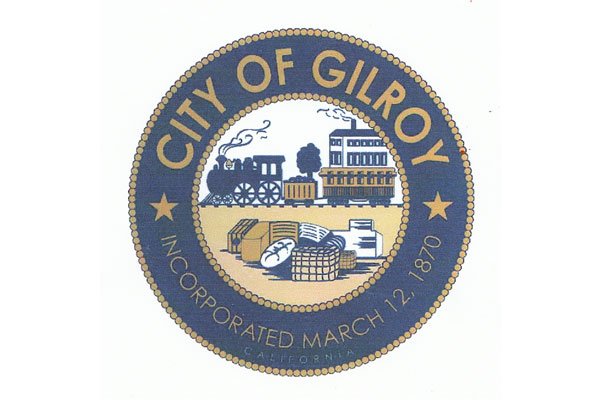Gilroy City Councilman Perry Woodward questioned the city’s practice of stowing away more than $20 million in reserves this past February, saying the city “should not be holding onto more money than we need.”
Now, he’s not so sure, and it’s a thunderhead of uncertainty looming over state leaders in Sacramento that has him thinking twice.
“I’m really reluctant to start spending that,” Woodward said Monday about the reserves, which the city’s finance department said has grown to $24.7 million.
“We don’t need that much money in reserve because it’s not appropriate, but I think in this case, as a community, we’d be wise to hold onto that money for a while until everything shakes out,” Woodward said. “Who knows what’s going to happen at the state level for the next four to eight years?”
It’s a staggering question that, for now, is without clear answers. And as Gov. Jerry Brown expects to announce California’s economic forecast Thursday – which could include hundreds of millions of dollars in cuts to schools, services and public safety – local leaders might grip their extra cash a little tighter.
But that could be a mistake, said Councilman Dion Bracco, who, as of Monday, still plans to run against Woodward for mayor in 2012. Bracco says it’s time to start spending the reserves.
“I think we should use some of it around town. The money belongs to the residents of Gilroy,” Bracco said. “I don’t think we should hoard that money. There’s some spots around town that we need to improve.”
Bracco says he’ll propose a plan as early as next month that would set aside a percentage of city surplus funds each year “to go back into the community,” including street repairs, new sidewalks and renovations to the interim Center for the Arts. In 2010, the Council approved a general fund reserve policy that retains a minimum of 25 percent of expenditures.
“There’s a lot of areas around town that could use a little bit of investment,” Bracco said. “We’re not broke. We have the money.”
He added, “If you’re saving it for a rainy day, I don’t know what could be worse than the last couple years.”
In 2009, the city eliminated 48 full-time and part-time positions, along with 23 vacant positions, in an attempt to eliminate a $4.7 million deficit.
While the city holds true to its touted reserves, residents will have to keep up with a recently approved new fee schedule, which includes an increase from $55 to $80 for youth soccer sign-ups.
And keeping extra cash tucked away would contrast with the city’s thinking during a brisk budget-approval process in May, when unexpected sales tax revenues and positive predictions for local development helped bring an end to furloughs and allow for huge increases in funding for the city’s economic and tourism groups. Woodward and Mayor Al Pinheiro said during the budget sessions they’d be willing to dip into the reserves to cover any necessary city expenditures.
For now, however, it doesn’t appear the Council is looking to spend much of its extra funds.
“I think holding the reserve fund is a good idea,” Councilman Peter Leroe-Muñoz said Monday. “Its function right now is to really make sure we have a safety net in case the economic situation gets worse, in case sales tax revenues fall at the Outlets.”
Gilroy’s reserves are roughly double those at the City of Hanford, Gilroy City Administrator Tom Haglund’s former employer in Kings County that has a population comparable to the Garlic Capital.
When asked about the size of the reserves, Leroe-Muñoz said, “That’s pretty good. That’s something I’m comfortable with.”
That comfort, however, could be bad news for some in Gilroy, such as a progressing a downtown still desperately in need of an economic kick, developer and business owner Gary Walton said.
“I think they need to get some type of return on investment. They need to figure out a way to help finance these buildings,” Walton said, referring to roughly 25 properties still tagged as unreinforced masonry buildings, many uninhabitable until they are brought up to seismic code.
The city passed an ordinance earlier this year pledging to help downtown property owners reopen their shuttered buildings, but the city is potentially missing out on millions of dollars in revenue by not expediting the process, Walton argues.
“Not only would it create sales tax revenues, but it would create jobs,” Walton says. “Having that many empty buildings hurts.”
Councilman Bob Dillon, who has called the buildings “eyesores,” has said publicly he’d be willing to spend reserve dollars to fund downtown retrofits.
While Dillon said “it’s comforting to have a few nickels in the bank,” he’ll listen to requests to dip into the reserves on a “case-by-case basis.” Walton says the investment is worth the risk.
“We need to improve the aesthetics of the community. We need to improve the perception of the community,” Walton said. “I think there’s a lot of needs to be addressed. Success is not always measured in monetary terms. Having a bunch of money sit in the bank is not a sign of success.”
But until things in Sacramento get a little less murky, it’s probably the city’s best option, Woodward said.
In recent years, the state’s taken bigger and bigger bites out of cities’ tax shares, and the elimination of redevelopment agencies has put some communities as a huge disadvantage, Woodward argued. With the impending elimination of some services originally provided by the state, the onus will be on local governments to fill the voids.
“I’m still very concerned about what’s going to happen in the coming years in Sacramento,” Woodward said. “Those problems don’t stay in Sacramento.”













